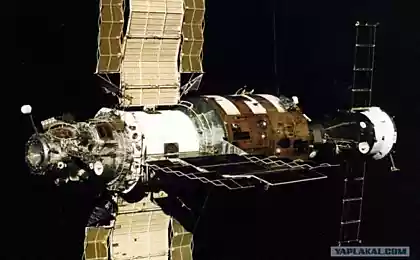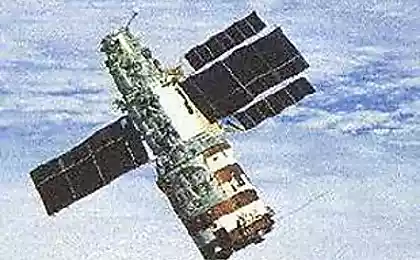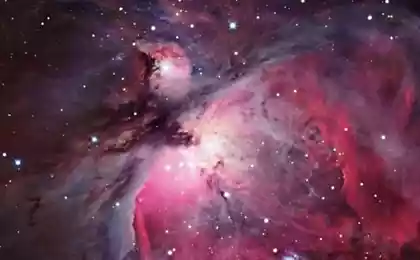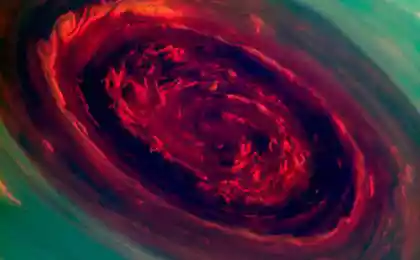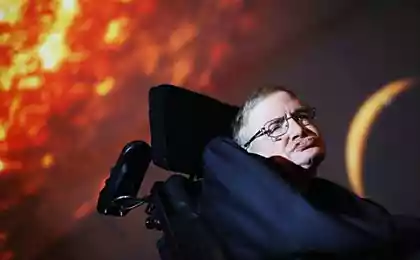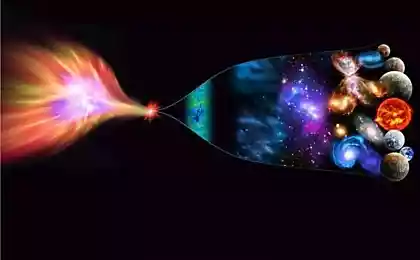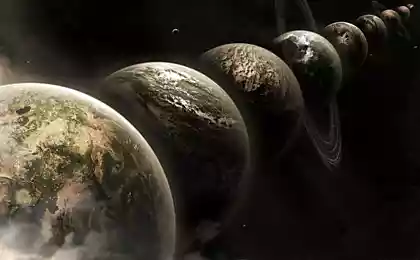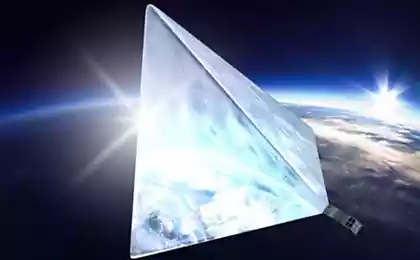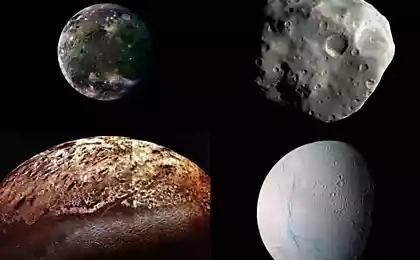563
Die and stars are born
How long it takes the stars to cool off after they exhaust their nuclear fuel? When you see any black dwarfs? Do they exist today? These questions at least once in your life come to mind of every person. Let's start by talking about the life of stars and walk all the way from birth to death.
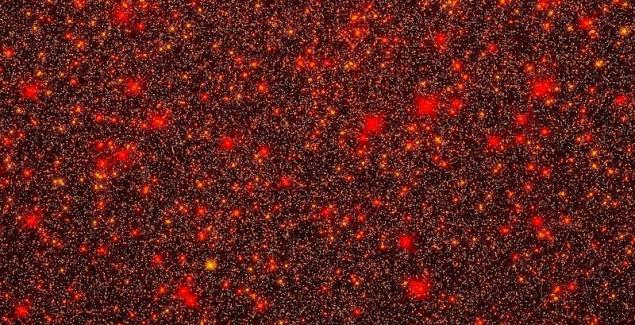
When the cloud of molecular gas collapses under its own gravity, there are always a few regions that start with a slightly higher density than others. Each point in this matter is trying to attract more of a different matter, but these regions of swashplates attract matter a little bit more effective than others.
Because gravitational collapse is a progressive process, the more matter you attract, the faster additional matter is committed to you. Although it may take millions or even tens of millions of years, to the molecular cloud has moved from a large diffuse condition in a relatively concise, the process of transition from a tightly compressed gas to a new cluster of stars — when in the most dense regions begins nuclear fusion — is only a few hundred thousand years.
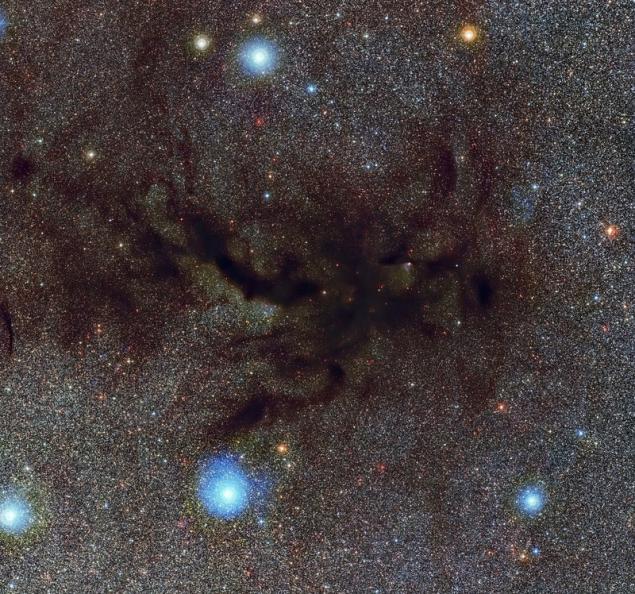
When you create a new cluster (cluster) of stars, it is easiest to notice first the bright, they are also more massive. These bright, blue, hot stars in hundreds of times the Sun's mass and millions luminosity. But despite the fact that these stars are impressive Pushcha others, they are also very small, less than 1% of all known full-fledged stars, and they live too long, as their nuclear fuel is burned for 1-2 million years.
When the brightest of these stars run out of fuel, they die in a colorful explosion of a supernova type II. When this happens, the inner core explodes, collapses to a neutron star (nuclei with low mass) or even to a black hole (for the cores of high mass), while the outer layers back out into the interstellar medium. There, these gases will contribute to future generation of stars, providing them with the heavy elements needed to create solid planets, organic molecules and, in rare cases, life.
Black holes, by definition, immediately become black. Unlike the accretion disk surrounding them, and the extremely low temperature of Hawking radiation arising from the event horizon, black holes almost immediately after the collapse of the core becomes sheer darkness.
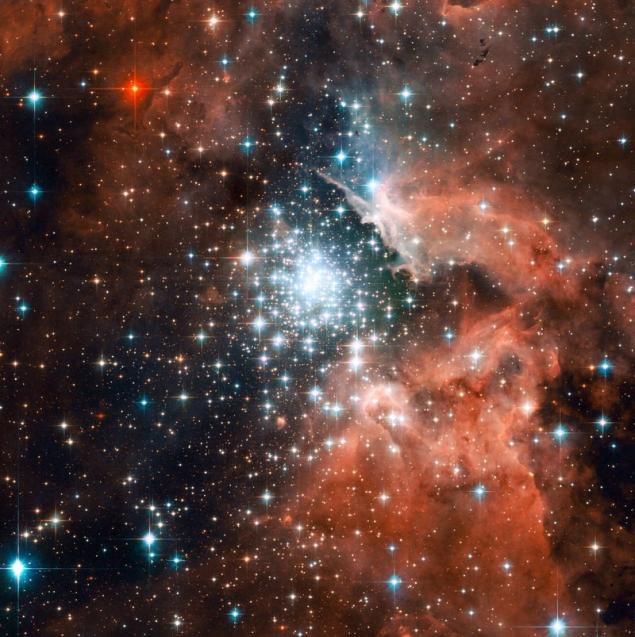
But with neutron stars, is another story.
You see, the neutron star siphons off the energy in the core of a star collapses and very quickly. When you take it and quickly squeeze you cause a sudden rise of temperature so operating the piston of the diesel engine. The collapse of a stellar core to a neutron star may be the most powerful example of the rapid compression. Seconds-minutes - of iron, Nickel, cobalt, silicon and sulphur in many hundreds or thousands of kilometers in diameter collapses to a ball with a diameter of about 16 kilometers. Its density grows to a quadrillion times (10^15), the temperature is also significantly increased: up to 10^12 degrees from the nucleus to 10^6 degrees on the surface.
And that's the problem.
When all this energy in a collapsing star like this, its surface becomes so hot that it glows only blue-white color in the visible spectrum, but most of her energy is not visible even in ultraviolet rays: this x-ray energy. This object is extremely much energy, but the only way to release it in the Universe through the surface, and the surface area is small.
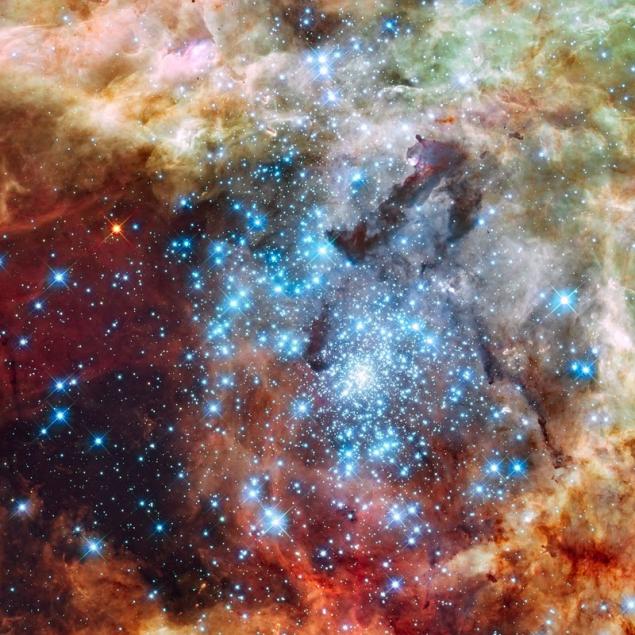
The big question, of course, is how long you will need a neutron star to cool. The answer depends on the aspect of physics that is poorly understood in the case of neutron stars: neutrino cooling. You see, although the photons (radiation) is usually captured by normal baryonic matter, neutrinos at generation can go through the entire neutron star intact. In the best case, the neutron star can cool in 10^16, that "only" millions of times more than the age of the Universe. In the worst case, you'll need 10^20 to 10^22 years, and so will have to wait.
There are other stars who will go out faster.
You see, the vast majority of stars — the remaining 99% not supernova, and in the course of my life slowly shrink to white dwarf stars. "Slowly" in this case is only compared to the supernova: require tens or thousands of years, not seconds-minutes, but is fast enough to capture almost all the heat from the stars in the nucleus. The difference is that instead of trying to catch her in a sphere with a diameter of 15 kilometers or so, this heat will be concentrated in an object the size of the Earth, a thousand times more neutron stars.

This means that although the temperature of these white dwarfs can be very high — more than 20,000 degrees, three times hotter than our Sun — they are cool much faster than neutron stars.
In white dwarfs, the neutrino flow slightly, this means that the radiation from the surface is the only important effect. When we calculate how quickly the heat can dissipate, this leads us to the timing of cooling of a white dwarf in 10^14 or 10^15 years. After that, the dwarf has cooled to a temperature just above absolute zero.
This means that 10 trillion is not (which is 1000 times longer than the time of the existing Universe) the surface of a white dwarf to cool to a temperature that will not see in visible light mode. And when that time passes, the Universe will have a brand-new type of object: a black dwarf star.

So while black dwarfs in the Universe no, she's too young for that. Moreover, the coldest white dwarfs, according to our best estimates, lost less than 0.2% of their full heat with the moment of creation. And for a white dwarf temperature of 20,000 degrees, this will mean a temperature drop to 19 960 degrees, i.e. negligible.
It's funny to imagine our Universe filled with stars that merged galaxies separated by huge distances. By the time when the first black dwarf, our local group will merge into one galaxy, most of the stars will burn out, leaving only red and dim low-mass stars.
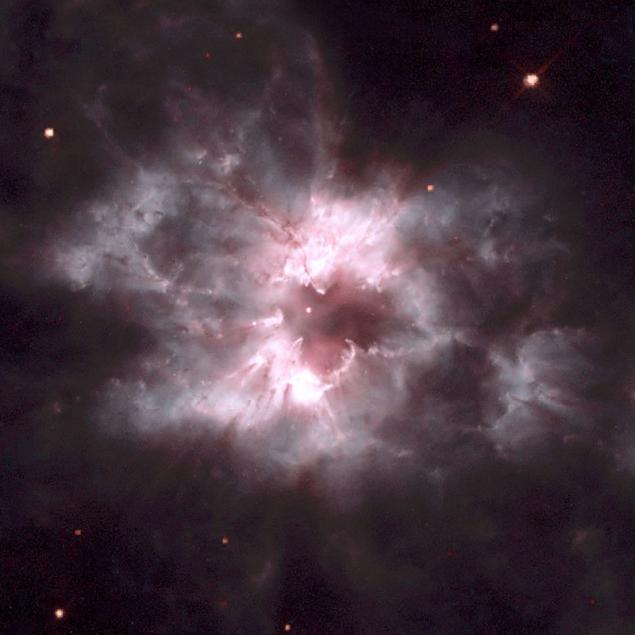
In addition, every other galaxy outside our own will disappear forever from our reach, thanks to dark energy. The chances of the emergence of life in our Universe will decrease and the corpses of stars will be jumping out of our galaxy due to gravitational interactions faster than will form a new one.

And yet, among all this new born object, which is our universe did not know. Even if we never see him, and we know what his nature is like and why he appears. And this, in itself, remains an amazing ability to science. published
P. S. And remember, only by changing their consumption - together we change the world! ©
Source: hi-news.ru/science/kogda-zvezdy-sovsem-pogasnut.html

When the cloud of molecular gas collapses under its own gravity, there are always a few regions that start with a slightly higher density than others. Each point in this matter is trying to attract more of a different matter, but these regions of swashplates attract matter a little bit more effective than others.
Because gravitational collapse is a progressive process, the more matter you attract, the faster additional matter is committed to you. Although it may take millions or even tens of millions of years, to the molecular cloud has moved from a large diffuse condition in a relatively concise, the process of transition from a tightly compressed gas to a new cluster of stars — when in the most dense regions begins nuclear fusion — is only a few hundred thousand years.

When you create a new cluster (cluster) of stars, it is easiest to notice first the bright, they are also more massive. These bright, blue, hot stars in hundreds of times the Sun's mass and millions luminosity. But despite the fact that these stars are impressive Pushcha others, they are also very small, less than 1% of all known full-fledged stars, and they live too long, as their nuclear fuel is burned for 1-2 million years.
When the brightest of these stars run out of fuel, they die in a colorful explosion of a supernova type II. When this happens, the inner core explodes, collapses to a neutron star (nuclei with low mass) or even to a black hole (for the cores of high mass), while the outer layers back out into the interstellar medium. There, these gases will contribute to future generation of stars, providing them with the heavy elements needed to create solid planets, organic molecules and, in rare cases, life.
Black holes, by definition, immediately become black. Unlike the accretion disk surrounding them, and the extremely low temperature of Hawking radiation arising from the event horizon, black holes almost immediately after the collapse of the core becomes sheer darkness.

But with neutron stars, is another story.
You see, the neutron star siphons off the energy in the core of a star collapses and very quickly. When you take it and quickly squeeze you cause a sudden rise of temperature so operating the piston of the diesel engine. The collapse of a stellar core to a neutron star may be the most powerful example of the rapid compression. Seconds-minutes - of iron, Nickel, cobalt, silicon and sulphur in many hundreds or thousands of kilometers in diameter collapses to a ball with a diameter of about 16 kilometers. Its density grows to a quadrillion times (10^15), the temperature is also significantly increased: up to 10^12 degrees from the nucleus to 10^6 degrees on the surface.
And that's the problem.
When all this energy in a collapsing star like this, its surface becomes so hot that it glows only blue-white color in the visible spectrum, but most of her energy is not visible even in ultraviolet rays: this x-ray energy. This object is extremely much energy, but the only way to release it in the Universe through the surface, and the surface area is small.

The big question, of course, is how long you will need a neutron star to cool. The answer depends on the aspect of physics that is poorly understood in the case of neutron stars: neutrino cooling. You see, although the photons (radiation) is usually captured by normal baryonic matter, neutrinos at generation can go through the entire neutron star intact. In the best case, the neutron star can cool in 10^16, that "only" millions of times more than the age of the Universe. In the worst case, you'll need 10^20 to 10^22 years, and so will have to wait.
There are other stars who will go out faster.
You see, the vast majority of stars — the remaining 99% not supernova, and in the course of my life slowly shrink to white dwarf stars. "Slowly" in this case is only compared to the supernova: require tens or thousands of years, not seconds-minutes, but is fast enough to capture almost all the heat from the stars in the nucleus. The difference is that instead of trying to catch her in a sphere with a diameter of 15 kilometers or so, this heat will be concentrated in an object the size of the Earth, a thousand times more neutron stars.

This means that although the temperature of these white dwarfs can be very high — more than 20,000 degrees, three times hotter than our Sun — they are cool much faster than neutron stars.
In white dwarfs, the neutrino flow slightly, this means that the radiation from the surface is the only important effect. When we calculate how quickly the heat can dissipate, this leads us to the timing of cooling of a white dwarf in 10^14 or 10^15 years. After that, the dwarf has cooled to a temperature just above absolute zero.
This means that 10 trillion is not (which is 1000 times longer than the time of the existing Universe) the surface of a white dwarf to cool to a temperature that will not see in visible light mode. And when that time passes, the Universe will have a brand-new type of object: a black dwarf star.

So while black dwarfs in the Universe no, she's too young for that. Moreover, the coldest white dwarfs, according to our best estimates, lost less than 0.2% of their full heat with the moment of creation. And for a white dwarf temperature of 20,000 degrees, this will mean a temperature drop to 19 960 degrees, i.e. negligible.
It's funny to imagine our Universe filled with stars that merged galaxies separated by huge distances. By the time when the first black dwarf, our local group will merge into one galaxy, most of the stars will burn out, leaving only red and dim low-mass stars.

In addition, every other galaxy outside our own will disappear forever from our reach, thanks to dark energy. The chances of the emergence of life in our Universe will decrease and the corpses of stars will be jumping out of our galaxy due to gravitational interactions faster than will form a new one.

And yet, among all this new born object, which is our universe did not know. Even if we never see him, and we know what his nature is like and why he appears. And this, in itself, remains an amazing ability to science. published
P. S. And remember, only by changing their consumption - together we change the world! ©
Source: hi-news.ru/science/kogda-zvezdy-sovsem-pogasnut.html



